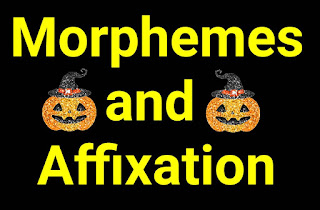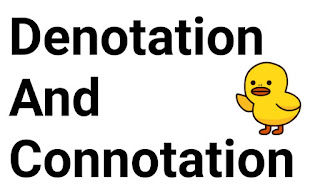MORPHEMES AND AFFIXATION
Some morphemes can exist as words on their own (e.g cat) but others cannot (e.g. s). Morphemes that can exist alone and still have meaning are called free morphemes, while those that cannot are called bound morphemes.
Exercise 1
How many morphemes are there in the words below? Which are free? Which are bound?
1. unattractive
2. midday
3. movement
4. teachers
Answers
1. Three: un + attract + ive
Un and ive are bound morphemes
Attract is a free morpheme.
2. Two: mid + day
Mid is a bound morpheme
Day is a free morpheme.
3. Two: move + ment
Move is a free morpheme
Ment is a bound morpheme.
4. Three: teach + er + s
Teach is a free morpheme
Er and s are bound morphemes.
A morpheme is often added to the beginning or end of a word to form a word that has a different meaning or is a different part of speech from the original.
Exercise 2
How do the morphemes in Exercise 1 change the words attract, day, move and teach? For example, un changes the meaning of attractive to the opposite of attractive.
Answers
1. Un changes the meaning of attractive to the opposite of attractive; -ive changes the verb attract into an adjective.
2. Mid adds the meaning of in the middle of to the word day.
3. Ment changes the verb move into a noun.
4. Er shows us that this word is a noun, i.e. it changes the part of speech from a verb to a noun; s shows us that it is plural.
Morphemes that are added at the beginning of words are called prefixes and those at the end are called suffixes. They are both types of affixes and the process of adding affixes is affixation. Prefixes normally change the meaning of a word (e.g. unhappy) while suffixes normally change the part of speech of a (e.g. when er is added to teach verb changes to a noun).
SUFFIXES
Knowledge of how suffixes form words can help us identify parts of speech. For example, when we see an -ate ending, we know the word is likely to be a verb.
Here are some common suffixes and the parts of speech they often make.
1. Suffixes - nouns
-al e.g. arrival
-ant, -ent e.g. assistant, student
-dom e.g. boredom, freedom
-ee e.g. employee
-ence e.g. dependence
-er, -or e.g. teacher, instructor
-hood e.g. childhood
-ity e.g. possibility
-ment e.g. employment
-ness e.g. happiness
-tion e.g. production
2. Suffixes - adjectives
-able e.g. recordable
-atic e.g. systematic
-ed e.g. employed
-ent e.g. dependent
-ful e.g. helpful
-ic(al) e.g. economic(al)
-ish e.g. brownish
-ive e.g. productive
-less e.g. careless
-ous e.g. famous
-y e.g. windy
3. Suffixes - verbs
-ate e.g. originate
-ise e.g. economise
4. Suffixes - adverbs
-ly e.g. quickly
-wards e.g. afterwards
PREFIXES
Here are some common prefixes and their most common meanings.
However, sometimes a word looks as if it has a prefix when in fact it does not. For example, record or resign do not have the meaning of 'again'. The verb record does not mean 'cord again'; there is no verb cord in English.
anti- : opposed to, against e.g. anti-social
dis- : the opposite of e.g. disagree, disagree
extra- : outside, in addition to e.g. extraordinary
il-, im-, in- : not e.g. illegal, impossible, inexperienced
inter- : between, among e.g. international
mid- : in the middle of e.g. midday, midnight, mid-December
mis- : wrong, wrongly, bad, badly e.g. misspelling, misspell, misbehavior, misbehave
non- : not e.g. non-stop, non-recordable
over- : too much e.g. overeat, overweight
pre- : before e.g. pre-heat, pre-arrange
re- : again e.g. remake, rewrite, reunite
un- : not, lacking, the opposite of e.g. undress, unlucky, unrecorded
under- : not enough e.g. underachieve, underweight



Comments
Post a Comment